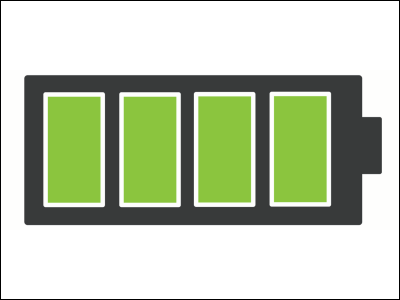'Technology for wirelessly charging running electric vehicles' is under development at Stanford University

In order to realize 'technology for wirelessly charging running electric vehicles,' Stanford University is conducting research on
Robust and efficient wireless power transfer using a switch-mode implementation of a nonlinear parity–time symmetric circuit | Nature Electronics
https://www.nature.com/articles/s41928-020-0399-7
Wirelessly charging electric cars as they drive | Stanford News
https://news.stanford.edu/2020/05/04/wirelessly-charging-electric-cars-drive/
Wireless charging pads for smartphones have already penetrated society to some extent, and it's not uncommon to leave your smartphone in a specific position for a couple of hours to charge. In addition, in the case of smartphones, you can open a web browser, check emails, and play videos even if the smartphone is fixed at a specific position. However, in the case of electric vehicles, it is very inconvenient if you leave the vehicle on the charging stand for 1 to 2 hours to replenish the fuel for traveling, because you cannot drive at all during that time. Therefore, Stanford University envisions 'a highway that can charge the battery anytime, anywhere by wirelessly transmitting electric power to an electric vehicle' and is developing technology for its realization.
The dreamy highway for electric vehicles was conceived by Shanfi Huang, a professor of electrical engineering and applied physics at Stanford University, and Sid Assawaworrarit, a graduate student in his lab. The two have successfully built a system for wireless power transfer to moving objects. However, since this system is still in the prototype stage, it seems that it will not operate normally except in an inefficient and well-equipped laboratory environment.

The 'wireless power transfer technology to moving objects' developed by the two people is still in the early stages of development, but the latest paper has been published in
Mr. Huang said, 'This is an important step to realize a' remote battery charging system 'that is practical and efficient even when cars and robots are moving at high speed.' We need to scale up the power we transmit to charge a car, but we don't think it will cause any serious harm.The existing system is practical enough to wirelessly charge a running robot. It is within the range that is possible. ”The two people developed' Wireless power transmission technology to moving objects 'is insufficient power to charge electric vehicles, but claims that it is a sufficient finish to charge robots etc. I am.

For common wireless power transfer technologies, there are several wireless power transfer methods. Among them, the most promising method is to transmit electric power by
Therefore, the research team of Fan et al. Will develop a wireless charger in 2017 that can transmit power even if the distance between the receiving side and the transmitting side changes. This wireless charger incorporates an amplifier and feedback resistor to allow the system to automatically adjust the operating frequency when the distance between the 'charger' and the 'moving object you want to charge the battery' changes. thing. As a result, the charger side can change the resonance frequency one by one so that the moving body can be wirelessly charged. However, since it was only in the initial stage of development, the amplifier for changing the operating frequency consumed a lot of power, and only 10% of the power flowing to the system could be transmitted wirelessly.
Fan et al.'S research team published an improved version of this 'wireless power transfer technology for moving objects' in April 2020. The latest version of 'Wireless power transmission technology for moving objects' improves wireless transmission efficiency from 10% to 92%. According to Assawaworrarit, the key to improving transmission efficiency was replacing the amplifier with a much more efficient switch amplifier. The switch amplifier itself is by no means new, but it seems to perform high efficiency amplification only under difficult and very accurate conditions. Therefore, the research team says that it spent several years to design 'a circuit configuration of moving wireless power transfer technology that operates normally while using a switch amplifier'.

The wireless charger created as a result of research is capable of wirelessly transmitting 10 W (watt) of power at a distance of 2 to 3 feet (about 0.61 to 0.91 meters). Since the prototype was created for theoretical verification, the power that can be transmitted is 10 W, which is clearly insufficient to charge an electric vehicle. But there is basically no obstacle to scaling up the system to carry the tens or hundreds of kW (kilowatts) of power that an electric vehicle needs, he said.
In addition, the latest version of 'Wireless power transfer technology to moving objects' can transfer power to a fast-moving receiver, so it is possible to fully charge the battery of a running car. Note that power transfer only takes a few milliseconds.
'A wireless charger shouldn't pose a health risk,' Assawaworrarit said, and even a wireless charger that's powerful enough to charge an electric vehicle can generate magnetic fields that fall within existing safety guidelines. It says that it should be generated.
Related Posts:







